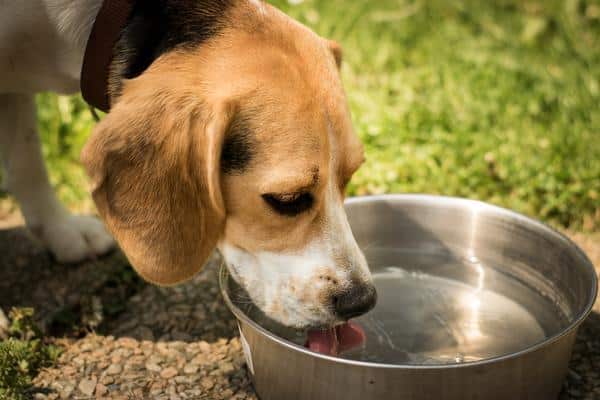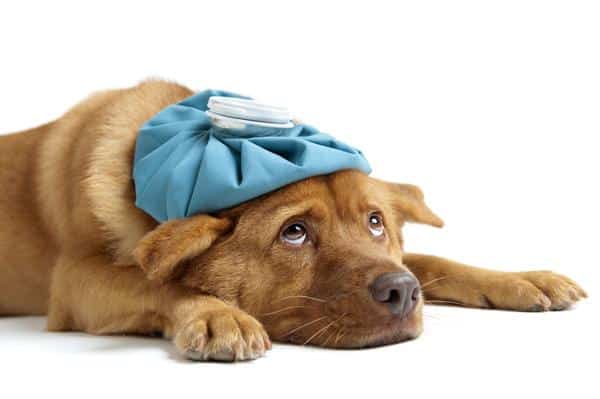Healthy Kidneys Are About More Than Proper Hydration.
Whether you’re treating or preventing kidney disease in dogs, here’s what you need to know.
Kidney disease.
It’s a diagnosis you never want to receive…either for you or your dog. But what does it mean when your dog is in renal failure? How serious is their condition? Is there any way to prevent it?
While kidney disease in dogs is a cause for concern, it doesn’t have to take away your dog’s zest for life.
In this article, we’ll talk about what kidney disease in dogs looks like, how it’s caused, treatment, and ways to prevent this condition in your pup.
What Is Kidney Disease?
Before we answer this question, let’s first talk about how healthy kidneys function.
Essentially, kidneys function in dogs the same way they do in humans. They act as a cleaning mechanism inside our bodies, filtering blood and removing toxins and other waste products via the urine.
Obviously, keeping the body free of toxins is important to keep humans and dogs healthy. So when a dog begins to succumb to kidney disease, it means that their kidneys have stopped doing their job.
A common myth is that kidney disease in dogs will lead to decreased urine output. In fact, renal failure has nothing to do with how much urine is produced and everything to do with how efficiently the kidneys are able to filter the blood. If the kidneys aren’t working properly, your dog may actually urinate more often (more on symptoms later).
In many cases, kidney disease starts out with no symptoms. About two-thirds of the organ has to be affected in order to show the worst of symptoms. By the time your dog has started to show symptoms of this condition, s/he is already at an advanced stage.
Most dogs develop kidney disease as they age. (Remember, dogs age faster than humans.)
Symptoms Of Kidney Disease In Dogs
If you’ve got a senior dog, you might be concerned about them developing kidney disease in the future.
Here are the most common symptoms:
- Increased thirst/urination – When the kidneys become less efficient at filtering the blood, they instead try to dilute the blood to lessen the impact of any toxins that are present. The dog begins to urinate more and, as a result, s/he becomes thirsty. This is an early sign that is often overlooked because it doesn’t seem “concerning” (if it’s even noticed at all).
- Bad breath – We know doggy breath isn’t always the most pleasant, but this type of odor is extremely pungent, due to the increased toxins in the body. If you take good care of your dog’s teeth but their breath is still foul, kidney disease could be to blame.
- Diarrhea/Constipation – The accumulation of toxins/waste can affect bowel movements as well. Because the kidneys aren’t able to flush enough toxins into the urine, their body will try to rid itself of the toxins in their stool. This can create a gut imbalance that causes either diarrhea or constipation.
- Lack of appetite – When your dog refuses to eat, that’s usually a sign that something is wrong. A buildup of toxins in the blood can often make dogs feel nauseated. Keep an eye out for sudden, unexplained weight loss.
- Lethargy – Anything that makes organs function less effectively can lead to overall fatigue. Watch for extreme lethargy due to the buildup of toxins.
*NOTE* If you’re noticing any of these symptoms (or things just seem “off”), make sure you contact your vet immediately. This article should not be substituted for medical advice from a professional.
Causes
There are multiple reasons that your dog can develop either chronic or acute kidney disease.
Acute kidney disease is a sudden onset of severe symptoms. This particular form of kidney disease is caused by things like eating grapes or trauma to the area. In most cases, your dog can return to a normal life after intravenous fluid therapy to dilute the toxins and rehydrate the body.
Common causes for chronic kidney disease are age, birth defects, cancer, long-term infections, high-blood pressure, and exposure to certain chemicals.
Treating Kidney Disease In Your Dog
Unfortunately, there is no way to reverse or cure chronic kidney disease in dogs.
Following the diagnosis, your veterinarian will advise you on a treatment plan to give your dog the longest and healthiest life possible. Many factors must be considered, such as the age of your dog, the extent of the damage, and whether he/she will have quality of life for the foreseeable future.
In nearly all cases, proper treatment for kidney disease involves a change in diet. Your veterinarian will likely recommend a high-moisture, low-phosphorus diet.
Too much phosphorus is difficult for sluggish kidneys to filter out. By increasing fluid intake and decreasing the amount of phosphorus (and toxins!), your dog’s kidneys will not have to work as hard.
Our Kidney Support meal formulation was developed specifically for dogs with chronic kidney failure in mind. Dogs love it!
Fortunately, with early detection and proper treatment, many dogs can continue to live normal lives for years.
Prevention
As the old saying goes, “An ounce of prevention is worth a pound of cure.”
Keep all toxins out of your dog’s reach and ensure that any chemicals that you use around the house are safe for pets. Keep dogs away from harmful human food (chocolate, caffeine, grapes, garlic, and onions, just to name a few) as they can cause acute renal failure. As always, make sure your dog always has access to fresh, clean water.
Next, make sure your dog gets an annual checkup and ask your vet for routine blood tests to get ahead of the game.
Conclusion
Hearing that your beloved family pet is sick can be a tough pill to swallow. But even though kidney disease in dogs is not reversible you can still help your pup maintain their quality of life.
With an ounce of prevention and the right diet, you can help your dog stay healthy and happy for as long as possible.
At Rick’s Dog Deli, we have a range of Therapeutic Meal Formulations for a variety of different conditions, including kidney disease. (Don’t want to leave the house? We deliver!)



